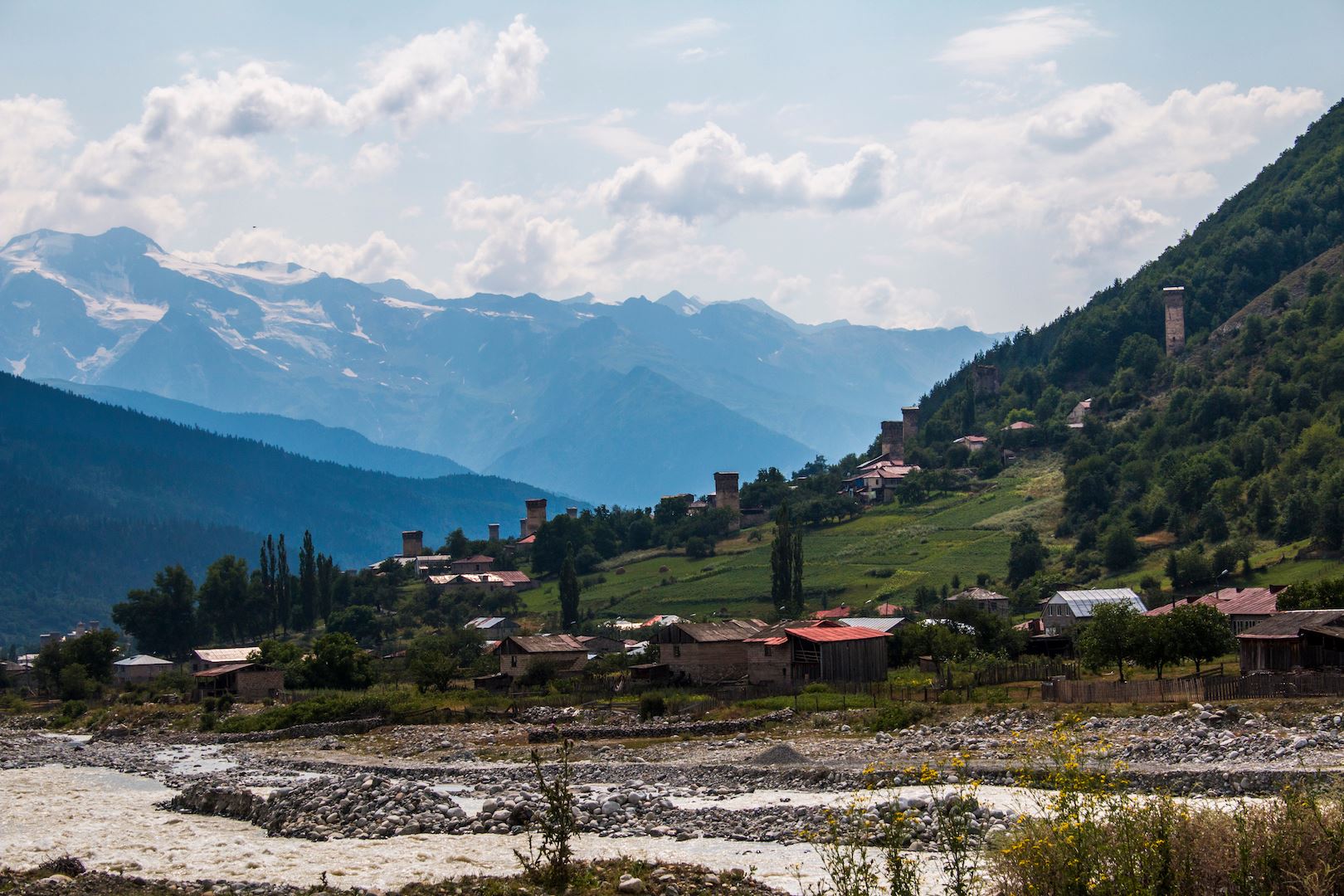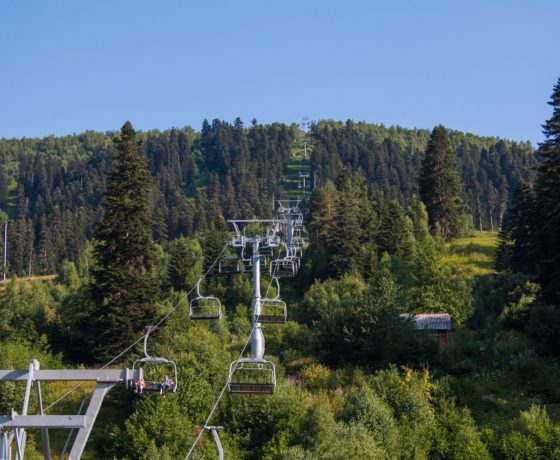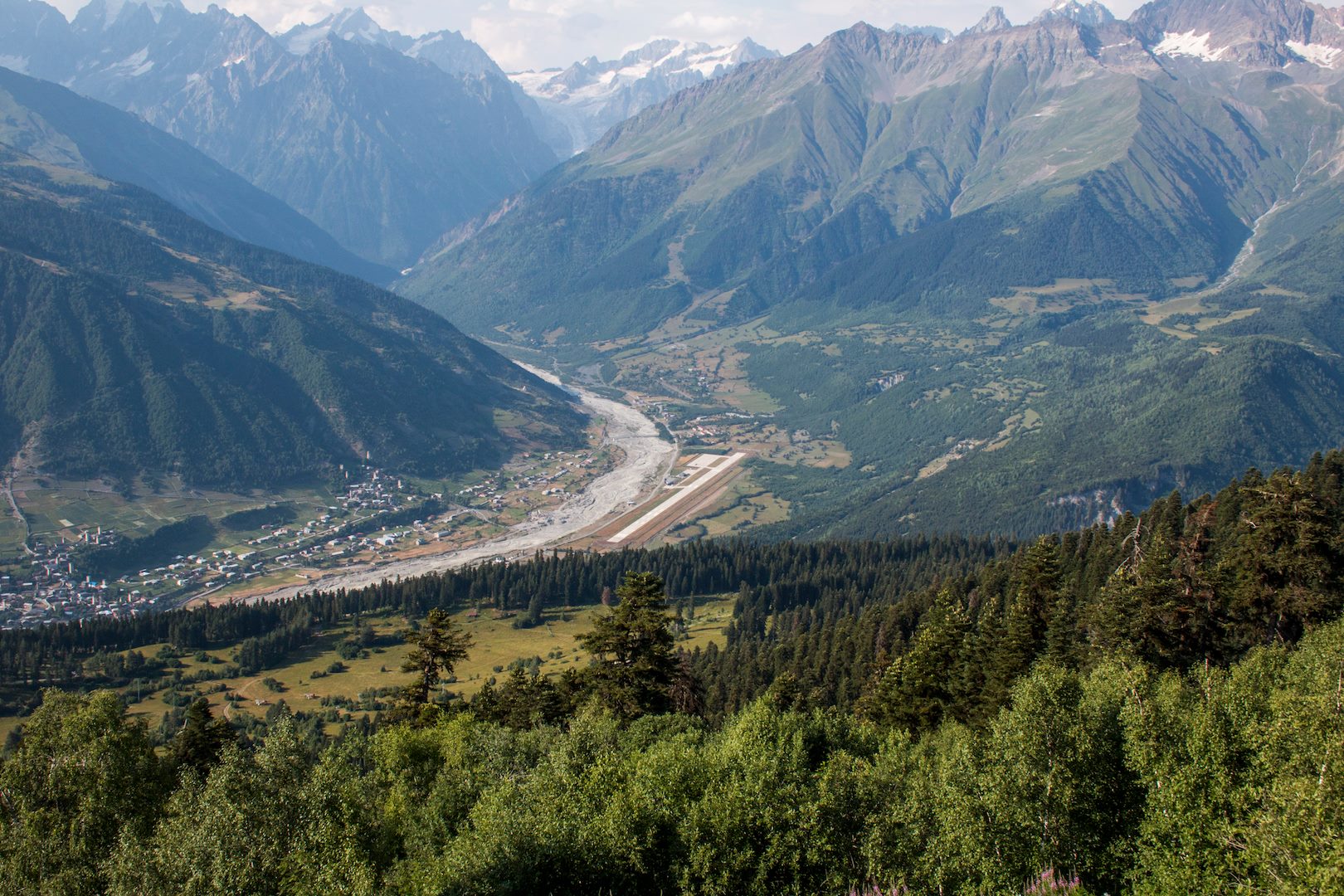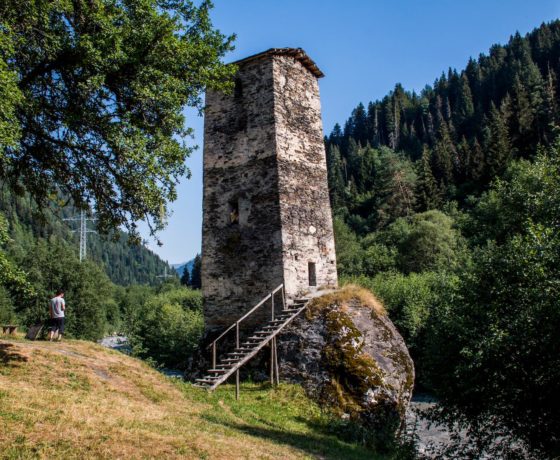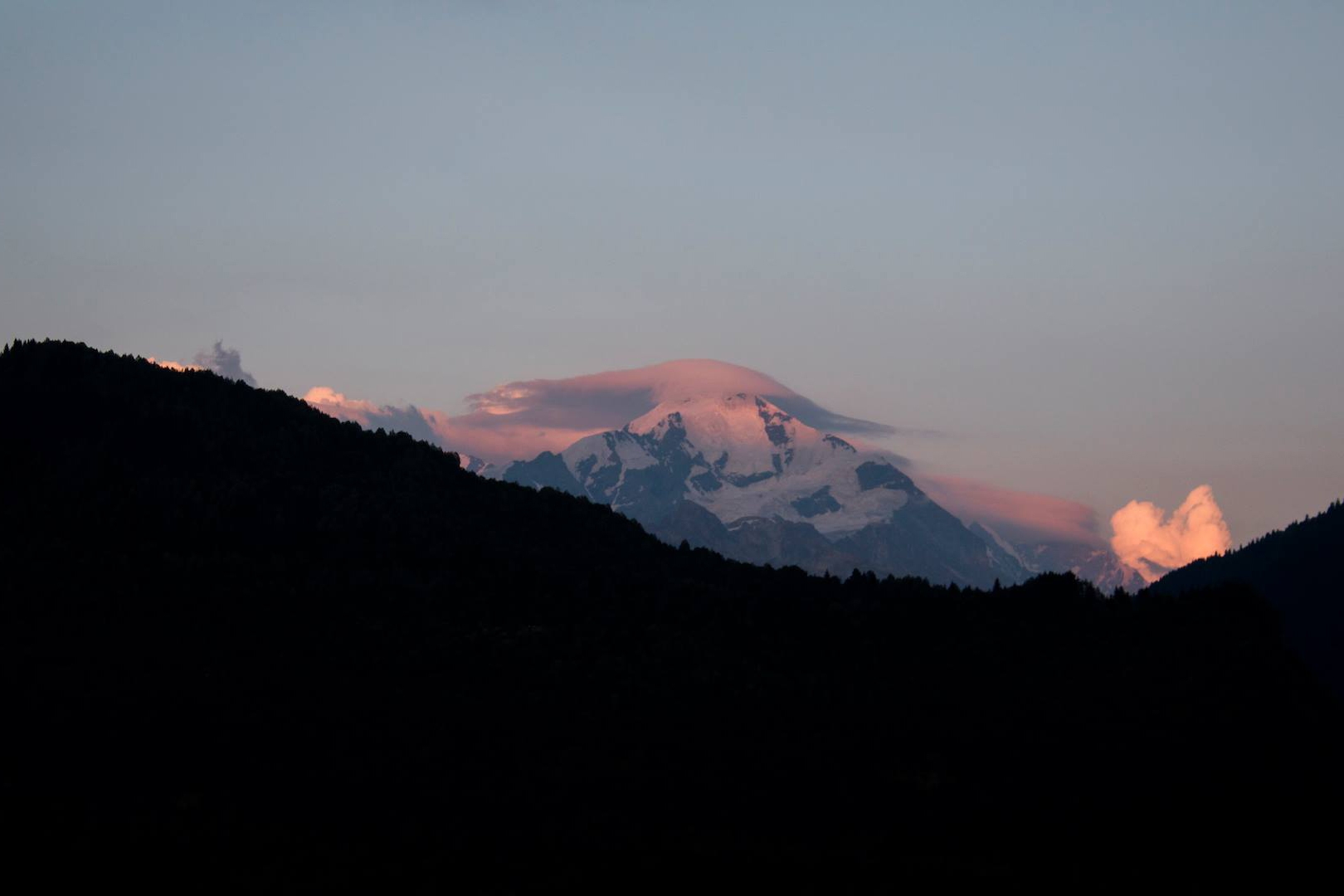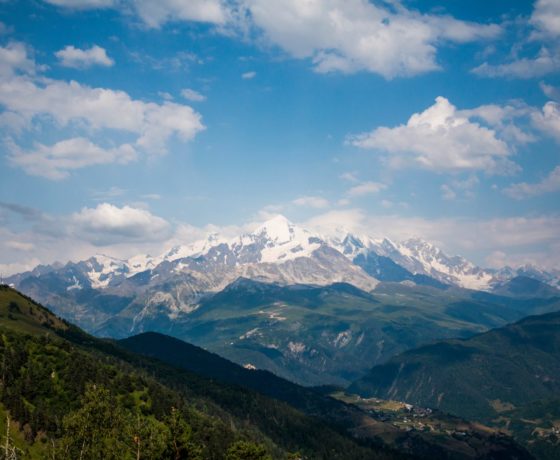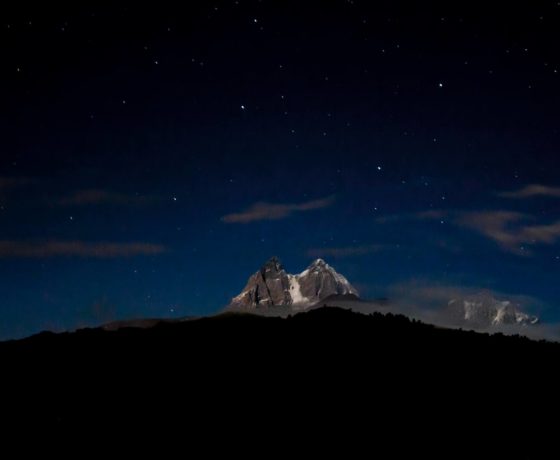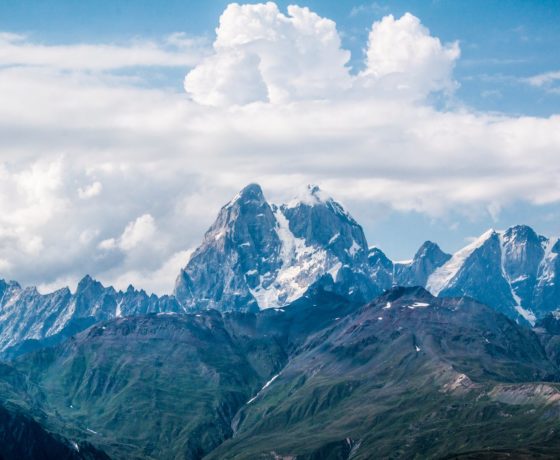From East to West Voyage
From East to West Voyage
Cross the whole Georgia
Day 1
Kartli: Uplistsikhe, Mtskheta
Our journey will begin from the ancient cave city – Uplistsikhe. The history of Uplistsikhe goes back to the 2nd-1st millenniums B.C. In antiquity. Uplistsikhe is remarkable for the unique combination of styles from rock-cut cultures of the region, most notably from Cappadocia (in modern Turkey) and Northern Iran. Most of the unearthed artifacts can be seen at the National Museum in Tbilisi.
Mtskheta is considered to be the centre of Georgian Orthodox and Apostolic Church. Svetitskhoveli Cathedral-First church was built in 4th century. Christ’s mantle is buried here, which was brought here from Jerusalem. The church is in UNESCO world heritage sites.
There is plenty of ancient and modern architectural monuments are concentrated.
Mtskheta is considered to be the centre of Georgian Orthodox and Apostolic Church. Svetitskhoveli Cathedral-First church was built in 4th century. Christ’s mantle is buried here, which was brought here from Jerusalem. The church is in UNESCO world heritage sites.
There is plenty of ancient and modern architectural monuments are concentrated.
Day 2
Kakheti: David Gareja and Signagi
On the border with Azerbaijan, the ancient monastery complex of Davit Gareja (or Gareji) is one of the most remarkable of Georgia’s historic sites. Its uniqueness is heightened by a lunar, semidesert landscape that turns green and blooms with flowers in early summer.
The word sighnaghi is a Turkish and means “shelter”. Today, this city calls the ‘’city of love’’. In the case of good weather, we will have a chance to see the beauty of the snow-capped peaks of the Caucasus mountains and the most beautiful Alazani Valley
The word sighnaghi is a Turkish and means “shelter”. Today, this city calls the ‘’city of love’’. In the case of good weather, we will have a chance to see the beauty of the snow-capped peaks of the Caucasus mountains and the most beautiful Alazani Valley
Day 3
Kakheti: Ninoskhevi (Gurgeniani) Waterfall
The route starts from the Gurgeniani Information Center and follows the Ninoskhevi River on a narrow path. The sound of the river, the little waterfalls, huge stones, and cool breeze wandering through the valley make the trip both highly entertaining and adventurous. Take a few steps and magic scenery will spread in front of you – a 40 m long Ninoskhevi waterfall which is one of the most beautiful in Georgia. Its noise attracts the surroundings and sets a new dimension for viewers. On the way we come across rare relict plants such as Lagodekhiangentiana, Lagodekhian snowdrop, Julia purusula, bladdernut, wing nut, chestnut, Georgian oak and etc. It is also possible to come across roe, deer, wild boar and birds of prey.
8.5km, 4 – 6 hrs, pedestrian, difficulty: average
8.5km, 4 – 6 hrs, pedestrian, difficulty: average
Day 4
Imereti: Prometheus Cave
Prometheus Cave – Discovered in Imereti region in 1984, Prometheus Cave is one of Georgia’s natural wonders providing visitors with breathtaking examples of stalactites, stalagmites, curtains, petrified waterfalls, cave pearls, underground rivers, and lakes.
Enguri Dam – The Enguri Dam is a hydroelectric dam on the Enguri River in Georgia. Currently it is the world’s fourth highest concrete arch dam with a height of 271.5 metres.
Enguri Dam – The Enguri Dam is a hydroelectric dam on the Enguri River in Georgia. Currently it is the world’s fourth highest concrete arch dam with a height of 271.5 metres.
Day 5
Svaneti: Usba Glacier and Waterfalls
In the morning we start our trek from the guesthouse through woods to the foot of Mt. Ushba at (4700m). A beautiful trek will bring us to the waterfalls and we can enjoy the spectacular view of Ushba waterfall and Ushba glacier . The first 2 hours is comparatively easy, but the next 3 hours gets a bit harder. On our way back we meet our local transport near a bridge and return to the guesthouse.
Day 6
Svaneti: Mestia’s ethnographic museum, Chalaadi Glacier
In the morning we transfer to Mestia (1 hour) and start with a visit to Mestia’s ethnographic museum and old watch towers. After this we drive (20min) to Lavladashi and trek to Chalaadi Glacier. We follow beautiful valleys and trek through lush forests before we get a glimpse of the glacier. Trek down to a foot bridge over Mestiachala.
Day 7
Svaneti: Trekking from Mestia to Jabeshi
The trail starts at an elevation of 1500m above the sea level, the maximum elevation is 1900m and ends at 1600m. Total distance 14 km. Time needed 6-8 hours. Through alpine meadows and along rough jeep tracks following Jabeshi starts a hard climb up toward Adishi.
Day 8
Svaneti: Trekking from Jabeshi to Adishi
The ancient village of Adishi is located several kilometers away from Ipari under Mount Tetnuldi. The village has four churches: the Church of Christ, the Church of the Archangel, and two churches of Saint George. The Church of Christ held icons from the 11th-14th centuries (now stored at a museum), as well as a manuscript of Shatberdi dating back to 897, which includes detailed artwork known as the four chapter book of Adishi.
Day 9
Svaneti: Adishi – Iprali
Start trekking to the village of Ipali. The biggest and most decorated church in this community is the Nakipari Church, built in the 10th century. Theodore, King David the Builder’s painter, painted artwork in this church. The church also contains an 11th century icon of Saint George carved in gold and silver.
Day 10
Svaneti: Iprali- Ushguli
Ushguli’s medieval constructions are under the protection of UNESCO. A historical settlement located in the very East of Svaneti, Ushguli is one of the highest settlements in Europe (2,000-2,200m above sea level). It was part of the so-called “Free Svaneti” as for centuries the people here defended the region against numerous attacks. The Church of Saint Mary is located on one of the highest points in Ushguli and it is also the home to the remnants of one of the most ancient fortresses of Svaneti with 37 towers, dating back to the reign of Queen Tamar. The views and surrounding landscape are stunning.
We have a superb track in the afternoon which takes us through the mountains to Shkhara Glacier where the Enguri River starts. After which we return to Ushguli.
We have a superb track in the afternoon which takes us through the mountains to Shkhara Glacier where the Enguri River starts. After which we return to Ushguli.
Day 11
Samegrelo: Martvili Canyon
Back to Tbilisi.
Main points
- Tbilisi capital of Georgia
- Mtskheta
- Jvari Monastery
- Uplistsikhe
- David Gareji Lavra
- Ninoskhevi Waterfall
- Signagi – City Of Love
- Prometheus Cave
- Enguri Dam
- Ushba Waterfall & Glacier
- Mestia ethnografic museum
- Chalaadi Glacier
- Ushba Mountain
- Panoramic views of Jabeshi, Iprali, Ushguli
- Adishi Glacier
- Shkara Mountain
- Shkhara Glacier
- Ancient Fortress
- Martvili Canyon
42.362547, 43.843681
41.693592, 44.799301
41.843228, 44.720900
41.839180, 44.733003
41.967480, 44.207268
41.444916, 45.375133
41.841544, 46.210245
41.611139, 45.924354
42.376715, 42.600838
42.760633, 42.036453
43.130848, 42.594100
43.041128, 42.726646
43.126524, 42.716703
42.978353, 42.927253
42.998532, 43.110412
42.456733, 42.375783
41.693592, 44.799301
41.843228, 44.720900
41.839180, 44.733003
41.967480, 44.207268
41.444916, 45.375133
41.841544, 46.210245
41.611139, 45.924354
42.376715, 42.600838
42.760633, 42.036453
43.130848, 42.594100
43.041128, 42.726646
43.126524, 42.716703
42.978353, 42.927253
42.998532, 43.110412
42.456733, 42.375783
